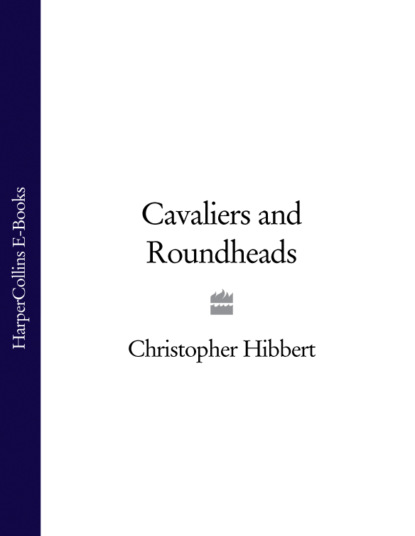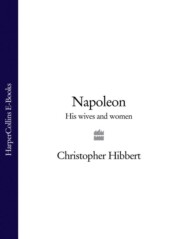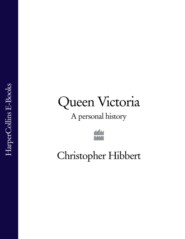По всем вопросам обращайтесь на: info@litportal.ru
(©) 2003-2024.
✖
Cavaliers and Roundheads
Настройки чтения
Размер шрифта
Высота строк
Поля
Elsewhere in Cambridge there were similar depredations. Colleges, purified of their papist excrescences, the stained glass in their chapels smashed, were turned into barracks or prisons; collections of ancient coins were appropriated and sold; a review of soldiers was held in King’s College Chapel; avenues of trees in college gardens were cut down for fortifications; several bridges were destroyed; and on Cromwell’s orders in St Mary’s Church, where the Book of Common Prayer was torn to shreds, the wood carvings were destroyed though there was evidently ‘not one jot of imagery or statue work about them’.
William Dowsing, the son of a Suffolk yeoman, who was commissioned with the task of demolishing superstitious monuments, ornaments and pictures in Cambridgeshire and Suffolk, kept a detailed journal of his work, minutely recording his depredations in the churches and chapels of East Anglia. At Haverhill, for example, in the process of working what he called his ‘godly thorough reformation’, he claimed to have broken down ‘about an hundred Superstitious Pictures; and seven Fryars hugging a Nunn; and the Picture of God and Christ; and divers others very superstitious’. ‘200 had been broke down before I came,’ he added. ‘We took away two popish Inscriptions…and we beat down a great Stoneing Cross on the top of the Church.’
At Peterhouse, Cambridge, so Dowsing said, he was responsible for the demolition of ‘two mighty great angels with wings and divers other angels and the four Evangelists and Peter with his Keys over the chapel door…and about 100 cherubims and divers superstitious letters in gold, and six angels in the windows…and 60 superstitious pictures, some Popes and some crucifixes, with God the Father sitting in a chair and holding a globe.’ An eyewitness described Dowsing going about ‘like a Bedlam breaking glasse windowes, having battered and beaten downe all our painted glasse…mistaking perhaps the liberall Arts for Saints…and having defaced and digged up the floors of our Chappels, many of which had lien so for two or three hundred years together, not regarding the dust of our founders and predecessors, who likely were buried there; compelled us by armed Souldiers to pay forty shillings a Colledge for not mending what he had spoyled and defaced, or forthwith to go to Prison.’
Such plate as did reach the King from Cambridge was mostly handed over for melting down to Thomas Bushell, an ingenious and enterprising engineer and entrepreneur, who managed with notable success the royal mines of Wales. As the King himself acknowledged in a letter of thanks, Bushell performed ‘manie other true services’ in the Royalist cause: ‘Your providing us with one hundred tonnes of leadshot for our army without mony, which ws paid before twentie pounds per tonne; and your helpinge us to twenty-six pieces of ordinance…and your contracting with merchants beyond the seas for providing good quantities of powder, pistol, carabine, musket and bullen…and your cloathing of our liefe guard [of miners] and three regiments more with suits, stockings and shoes when we were ready to march in the feild.’
With Bushell’s help a mint was established at Shrewsbury and recruits were soon being paid 45. 4d. a week, more than many were earning in civilian life. Later that year musketeers were being paid at the rate of 65. a week and horsemen as much as 175. 6d. But these rates had to be lowered as the months went by, and by the spring of 1644 the pay of ordinary soldiers had dropped to 45. a week; corporals had 75., sergeants 105. 6d., lieutenants £1 85., and captains £2 125. 6d. But these amounts, roughly the same in both armies, were often no more than notional. In the ranks of Royalists and Parliamentarians alike there were frequent complaints about pay being late or not forthcoming at all, and in the areas through which their armies passed there were just as angry charges that soldiers pillaged what they could not or would not buy. A soldier was supposed to receive every day from the commissariat two pounds of bread, one pound of meat or cheese, and an allowance of either wine or beer. But in these early days of the conflict he very rarely did so, and was driven to living as he could off the country, or as it was sometimes termed ‘at free country’, much to the distress of the people at large. A characteristic petition from the ‘inhabitants of Middlesex and other south-eastern counties’ complained of the ‘intolerable oppression of Free Quarter’ which rendered them ‘no better than mere conquered slaves [of the soldiers] who like so many Egyptian locusts fed so long upon [them] at free cost’.
In the Royalist army colonels of horse were ordered ‘to quarter and billet their respective regiments in such places as we have assigned, and there to take up such necessary provisions of diet, lodging, hay, oats and straw as shall be necessary for them. And if there shall not be sufficient for such supply in their quarters then they are to send out their warrants to the several parishes adjacent, requiring the inhabitants to bring in all fitting provisions for their daily supply. For all which, as for that taken up in their quarters, they are to give their respective tickets, and not to presume upon pain of our high displeasure, to send for greater quantities than will suffice for their numbers of men and horses.’
Tickets were, however, not always given for the provisions taken: and, when given, were not always honoured. Civilian people consequently ‘carried away or hid all their provisions, insomuch as there was neither meat for man or horse: and the very smiths hid themselves, that they might not be compelled to shoe the horses, of which in those stony ways there was great need’.
A sergeant recorded at about this time, ‘At Aynhoe we were very scanted for victuals; at Chipping Norton our regiment stood in the open field all night having neither bread nor water to refresh ourselves, having also marched the day before without any sustenance.’ Outside Swindon his regiment came upon some thousand sheep and sixty head of cattle. Persuading themselves that they belonged to ‘malignants and papists’, they immediately rounded them all up. Such behaviour was common enough in both armies.
Warned of Essex’s approach towards Worcester, the King ordered Prince Rupert to take half the cavalry which had so far assembled under the royal standard to intercept him. By 23 September, the Prince’s horse were about two miles south of Worcester near the village of Powick where the river Teme flows into the Severn. As he approached the Severn he was told that a body of Parliamentary horse, some thousand strong, had crossed the Teme at Powick Bridge behind him. They were advancing up a narrow lane between thick hedges which gave them no room to manoeuvre. Prince Rupert immediately saw his opportunity. Drawing his men up in the open field at the end of the lane, he prepared to charge as soon as the enemies’ leading horsemen had emerged from it. Waiting until a goodly number had appeared from behind the hedge, the Cavaliers galloped forward at their commanders’ order, overthrowing those Parliamentary horsemen who had come out into the field and throwing the rest into the utmost confusion as they rode this way and that, incapable of understanding, still less of carrying out, such orders as were given them. ‘Our wounded men they brought into the city,’ so Nehemiah Wharton recorded, ‘and stripped, and stabbed and slashed their bodies in a most barbarous manner and imbrued their hands in their blood. They also met a young gentleman, a Parliament man – his name I cannot learn – and stabbed him on horseback with many wounds, and trampled upon him, and also most maliciously shot his horse…All night we had small comfort, for it rained hard. Our food was fruit, for those who could get it; our drink, water; our beds, the earth; but we pulled up hedges, pales and gates and made good fires…Thus we continued singing of psalms until the morning. Saturday morning we marched to Worcester [which Prince Rupert had abandoned as being indefensible] the rain continuing the whole day, and the way so base that we went up to the ancles in thick clay; and, about four of the clock after noon, entered the city where we found twenty-eight dead men, which we buried…We shortly expect a pitched battle, which, if the Cavaliers will but stand, will be very hot; for we are all much enraged against them for their barbarisms, and shall show them little mercy.’
The Royalists claimed a great victory at Powick Bridge. So also did the Parliamentarians, who were in the habit of claiming victory even in battles which had never been fought. But Essex recognized that his cavalry would have to be far better trained before they engaged the Cavaliers again. They must, he instructed, practise the ceremonious forms of military discipline so that in future they would know how to ‘fall on with descretion and retreat with care’.
Encouraged by this victory and by the reputation which his nephew had gained from it, the King welcomed the recruits, who continued to come to him at Shrewsbury from the surrounding areas, in much improved spirits. By the beginning of October he had six thousand foot soldiers at his command, in addition to the horsemen whom Prince Rupert was training as assiduously as were Essex’s officers the Parliamentary cavalry; and by the middle of the month he was ready to march upon his recently abandoned capital, convinced, as Edward Hyde said, that it was owing to ‘the wonderful providence of God that from the low despised condition [he] was in at Nottingham, after the setting up of his standard there, he should be able to get men, money and arms and, within twenty days of his coming to Shrewsbury, to march, in despite of the enemy, even towards London’.
The King set out for London on 12 October, following the course of the Severn down to Bridgnorth, where the people came out into the streets to cheer him on his way, then turning east for Kenilworth, gathering more recruits en route until he had over fifteen thousand infantry and some eight thousand horsemen, more troops than he was ever to command again. They were not as well armed as his officers would have liked, some of the Welshmen who had joined him at Wolverhampton having to be content with pitchforks and even scythes and sickles; but he had twenty field guns and the men appeared to be in as good spirits as he was himself. They had been much encouraged by their cavalry’s victory at Powick Bridge and were already congratulating each other upon the superior merits of the young commander, Prince Rupert, who, for all his squabbles with his fellow-commanders, had undoubtedly instilled confidence into their men. He had found a ‘very thin and small army’ at Nottingham, as Sir Philip Warwick, one of his officers said, ‘and the Foot very meanly armed’. But he had soon ‘ranged and disciplined them’ and ‘put such spirit into the King’s army that all men seem’d resolved’.
The Earl of Essex, impeded by a large artillery train which he always insisted upon, marched slowly towards Warwick, a coffin and a winding sheet packed amongst the baggage in his wagons. When he reached the village of Kineton, intent upon intercepting the King’s march on London, his guns were a day’s march behind him on the road from Worcester. It was the late afternoon of 22 October when he rode into Kineton. The next day was a Sunday; and as he was on his way to matins that morning at the parish church of St Peter, he was told that the Royalist army had been sighted less than three miles away, across the road to London on the rising ground of Edgehill above the little village of Radway.
Prince Rupert had occupied this ground with his cavalry the night before, and had waited there for the infantry to join him. As soon as they did so there was trouble once more between the commanders, who had already differed as to the route the army had followed from Shrewsbury. Prince Rupert, whose commission exempted him from receiving orders from anyone other than the King, laid down in his most high-handed manner a plan of battle for the infantry as well as the horse. The Earl of Lindsey objected to it. They quarrelled, too, about the disposition of the pikemen and musketeers; and when the King came down on his nephew’s side, Lindsey lost his temper, hurled his baton to the ground and, declaring that if he was ‘not fit to be a general he would die a colonel at the head of his regiment’, he stormed off to the troops he had raised in Lincolnshire. The King asked the old Earl of Forth to take over the command from him.
The army was then drawn up in line of battle largely as Prince Rupert had proposed, the infantry in the centre, three brigades in the front rank, two in the second, pikemen in the middle, musketeers on the wings. Prince Rupert’s brigade of horse was on the right wing, with Sir John Byron’s horse in reserve. Beside them were the King’s Life Guard of cavalry under his cousin, Lord Bernard Stuart. The King’s standard was held by Sir Edmtmd Verney, still unwilling to desert the King but reluctant to fight for him. In command of the cavalry on the left, with Lord Grandison, Robert Dormer, Earl of Carnarvon and Lord Digby, was Prince Rupert’s second-in-command and rival, Henry Wilmot. On either flank were the dragoons, support troops riding horses much inferior to those of the cavalry and, at £4 each, costing less than half the price commanded by cavalry horses. When engaging the enemy, dragoons dismounted to fire their muskets and carbines on foot.
Behind the lines of musketeers and pikemen were the heavy guns waiting to fire over their heads; while the lighter guns were placed between the infantry brigades in the front rank. To the rear of the fighting men stood the surgeons, four or five of them attached to headquarters, the rest regimental surgeons, assisted by surgeons’ mates, few of them qualified, most as inexpert in the use of their crude instruments as those who tended the wounded knights at Agincourt in 1415.
Facing the Royalists the Parliamentary army was drawn up on the lower ground in a similar manner, infantry brigades in the centre, cavalry on either wing, Sir James Ramsay’s brigade on the left, with a reserve commanded by Denzil Holles. Sir William Balfour and Sir Philip Stapleton, a Yorkshire gentleman of moderate estate, were on the right with Basil, Lord Feilding, whose old father, the first Earl of Denbigh, was serving as an ordinary soldier in the opposing army, ‘with unwearied pains and exact submission to discipline, engaging with singular courage in all enterprises of danger’, until he was mortally wounded the following year.
Both armies presented a colourful appearance, beneath the bright, emblazoned standards of their various troops. The men in some regiments were clothed in red coats, in others blue or green, grey or buff or russet. Officers and sergeants, who provided their own clothes, were dressed as their fancy dictated, in some cases more flamboyantly than was deemed appropriate by the more sober minded, with velvet hats, fringed silk scarves about their waists, and cloaks ‘laden with gold and silver lace’. ‘The daubing of a coat with lace of sundry colours, as some do use them,’ wrote one disapproving observer, ‘I do neither take to be soldierlike nor profitable for the coat.’
Several officers in Parliament’s army were quite as flamboyantly dressed and wore their hair quite as long as their Royalist counterparts, as luxuriantly indeed as the Parliamentary Colonel John Hutchinson who, as his wife proudly related, had ‘a very fine thicksett head of haire, a greate ornament to him’. Even Roundhead sergeants were not above dressing extravagantly. One of these was happy to make use of a gift of his ‘mistress’s scarfe and Mr Molloyne’s hatband, both of which came very seasonably for [he had just had made] a soldier’s sute for winter, edged with gold and silver lace’. Later in the war coats became even more showy, with linings of a contrasting colour, and crosses or swords embroidered in red or blue silk on white sleeves. Brightly coloured scarves and sashes also became commonplace, usually crimson silk for Cavaliers, orange silk for Roundheads; and men on both sides wore field-signs in their hats, bits of white paper or sprigs of oak, so that they could recognize each other in the confusion and smoke of battle.
In the best-equipped infantry companies the men were provided with outer coats of thick, buff-coloured leather and steel back and breast plates. They also had, as well as their beaver hats or monteros, steel helmets, known generally as ‘pots’ which they were all too ready to take off and throw away, together with their even heavier ‘backs’ and ‘breasts’, when on the march in hot summer weather. For carrying their provisions they were issued with what were known as ‘snapsacks’ of leather or canvas. They were also given bandoleers for their cartridges and, for their powder, bags to hang from their belts.
They were told to take good care of their powder. Much of it had to be imported; the rest came from powder mills in England which might fall into the hands of the enemy, as those at Chilworth in Surrey and Lydney in Gloucestershire subsequently did. Moreover, saltpetre, an essential ingredient, was never in large supply. It had been a royal monopoly before the war; and, since it was a byproduct of bird droppings and human urine, government officials had authority to enter any properties they chose to dig in henhouses and privies. In 1638 ‘saltpetre men’, as they were known, had sought permission to extend their activities to the floors of churches ‘because women pisse in their seats which causes excellent saltpetre’.
Most soldiers carried short swords or axes as well as matchlocks, clumsy firearms which were as difficult to load quickly as they were to fire accurately. Until paper cartridges came into more general use, the requisite amount of powder had to be poured down the barrel, then rammed home with a rod before the ball was inserted, followed by a wad to ensure that it did not fall out again. To light the powder, the musketeer carried his match, a length of flax impregnated with saltpetre or cord boiled in vinegar, and this he lit at both ends when the time for firing came. Accidents were common. It has been calculated that three hundred men were killed by accident before the war was over, and hundreds more were injured. A Royalist officer commented, ‘We bury more toes and fingers than we do men.’ The open flame of the match could not, of course, be tolerated near large stores of powder; so infantry guarding the artillery train were equipped with flintlock muskets, a far superior weapon which was too expensive to be supplied to the infantry generally. Nor were cavalry troops usually supplied with the flintlock carbines which later became standard equipment. A few had wheel-locks in which the powder was fired by the friction of a small clockwork wheel, wound up by a spanner, against a piece of iron pyrites. But most had to be content with a pair of flintlock pistols which were even less reliable than flintlock muskets. They also had swords, often none too sharp, and they wore the same back and breast plates as the infantry, as well as high boots of thick leather which offered some protection to their legs. One or two regiments were supplied at their commanders’ expense with the kind of articulated plate armour to be seen in Continental cavalry regiments and with helmets designed to protect the neck and nose as well as the skull. Sir Arthur Haselrig’s cuirassiers from Leicestershire were issued with such comprehensive armour that they were nicknamed ‘the Lobsters’.
Even the most sophisticated armour, however, offered little protection against a determined pikeman armed with a pike sixteen to eighteen feet long, the hilt of which he would hold firmly in the earth beside his instep while the sharp steel point was levelled at the chests of the oncoming horse.
Men who had served in armies on the Continent argued endlessly as to the merits of the cavalry tactics favoured in the contending armies. There was, for example, the tactic known as ‘the Dutch’, in which a troop of horsemen came on at a quickish trot in about six ranks, firing their pistols as they advanced upon the infantry, then wheeling to one side to reform and charge again, brandishing their swords. Advocates of this tactic tended to deride the practice, perfected in the Swedish army of King Gustavus II Adolphus, in which the cavalry charged in not more than three ranks, the troopers riding so close together that their knees were interlocked, and holding their fire until the crash, or just before the crash, of impact.
Gustavus Adolphus himself had devised a drill for infantrymen to withstand these cavalry charges: they were to form up in three ranks, the first kneeling, the second crouching, the third standing, so that all could fire in the same instant, waiting until the last possible moment to do so, it being impossible for even the most skilled marksman to be sure of hitting his target at distances greater than sixty yards. After firing they were to retire quickly to reload, while another three ranks took their place. In the confusion of battle such drill, practised on the parade ground, was rarely performed satisfactorily. More often, once the infantrymen’s matchlocks had been discharged they lashed out with their swords or axes or the stocks of their firearms in the ensuing mêlée, inflicting as many savage wounds on horses and riders as they could until the survivors retreated from the field or rode away for another charge, disappearing into the sulphuric gunpowder smoke of the battlefield.
Pikemen were drawn up closely packed in square, rectangular or circular ‘hedgehogs’, sometimes protected by ‘swines’ feathers’, stakes with metal tips driven into the ground at an angle of 45 degrees. If steady and well-trained, pikemen could be relied upon to resist a cavalry charge, since horses would shy or turn away from an apparently immovable and dangerous obstacle. But the sight of thundering, shouting troops of horse would unnerve all save the most resolute man; and once a ‘hedgehog’ had begun to waver it could rapidly disintegrate, and was more than likely to do so when the pikemen comprising it were also being engaged by enemy infantry. Often the two sides were so closely interlocked that it was scarcely possible to raise an arm in defence or attack; men mortally wounded remained upright in the crush; and brave men could be carried off willy-nilly in a surge of terror-stricken soldiers struggling to escape the conflict, as was to happen to both Sir Thomas Fairfax and the King in the days to come.
Вы ознакомились с фрагментом книги.
Приобретайте полный текст книги у нашего партнера:
Приобретайте полный текст книги у нашего партнера:









